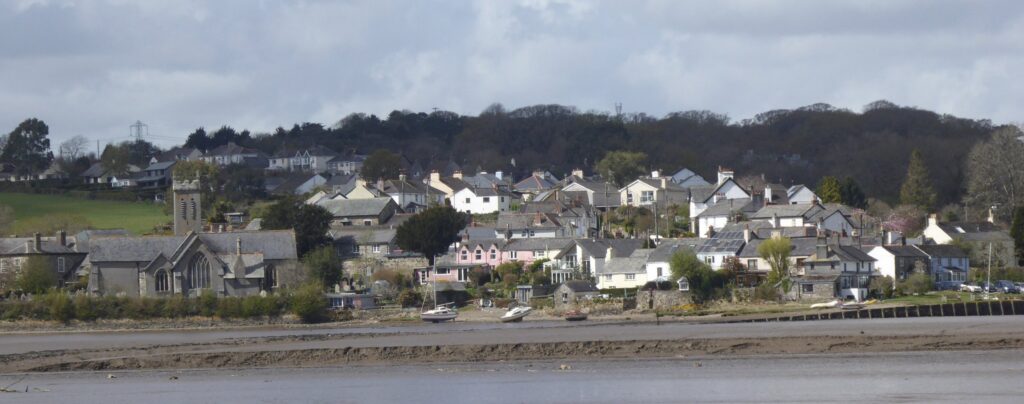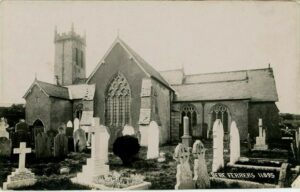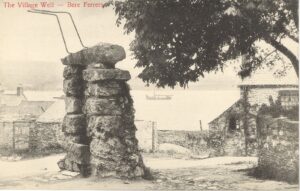Bere Ferrers
The heart of Bere Ferrers village lies down by the shore of the Tavy estuary – a delightful setting that changes with every shift of the light and tide. At low tide there are acres of glistening mudflats, the gathering ground of gulls and waders. A few hours later, the tide turns the estuary into a broad lake stretching unbroken to the steep bank of ancient oak woodland above Blaxton on the far side. The walk on the footpath along the river’s edge towards Gnatham is especially delightful.
 Bere Ferrers probably originated many centuries ago as a small, simple ‘port’ on the Tavy, serving the rural areas inland via a trackway that became the present road that runs north-south through the heart of the Bere Peninsula. Today, the ancient village quay is a tranquil place, with a few benches from which to enjoy the views across the estuary. In the 19th century, sailing barges called here regularly with cargoes such as limestone and the notorious ‘Dock dung’ – valued as a fertiliser for local farms Today there are just a few small leisure craft moored in the river or tied up at the quay.
Bere Ferrers probably originated many centuries ago as a small, simple ‘port’ on the Tavy, serving the rural areas inland via a trackway that became the present road that runs north-south through the heart of the Bere Peninsula. Today, the ancient village quay is a tranquil place, with a few benches from which to enjoy the views across the estuary. In the 19th century, sailing barges called here regularly with cargoes such as limestone and the notorious ‘Dock dung’ – valued as a fertiliser for local farms Today there are just a few small leisure craft moored in the river or tied up at the quay.
 Overlooking the Tavy estuary, and surrounded by its peaceful graveyard is the parish church of St. Andrew’s. A church has probably stood here since Anglo-Saxon times, but most of the present building was reconstructed in the 1330s by the Lord of the Manor, Sir William de Ferrers. Although its rough-cast tower is perhaps just a little plain, the church is full of interest inside. There is superb 14th century stained glass in the east window (the second-oldest in Devon after Exeter Cathedral), two medieval tombs and fine carved bench ends. The noted antiquary Charles Stothard was killed in the church in 1821 when he fell from a ladder while he was drawing the stained glass.
Overlooking the Tavy estuary, and surrounded by its peaceful graveyard is the parish church of St. Andrew’s. A church has probably stood here since Anglo-Saxon times, but most of the present building was reconstructed in the 1330s by the Lord of the Manor, Sir William de Ferrers. Although its rough-cast tower is perhaps just a little plain, the church is full of interest inside. There is superb 14th century stained glass in the east window (the second-oldest in Devon after Exeter Cathedral), two medieval tombs and fine carved bench ends. The noted antiquary Charles Stothard was killed in the church in 1821 when he fell from a ladder while he was drawing the stained glass.
Alongside the church is Bere Barton, which now turns an 18th century face to the river but was originally the fortified medieval manor house of the de Ferrers family and their successors.
Humbler cottages in the core of the village around the quay and church have come and gone over the centuries. Many of the survivors date from the 19th century when Bere Ferrers felt the impact of the local lead mining boom, like the whole parish. By the 1850s many new arrivals were crammed into the relatively compact heart of today’s village, many of them lead miners and labourers who had migrated from Cornwall and rural areas of northwest Devon. They would have trudged up the lanes each day to the mines at Lopwell and those near Weir Quay. Some of the cottages they lived in are still in use, such as the short terrace above the quay and those in Silver Street, the alleyway that runs behind the Olde Plough Inn.
Nearby is the village war memorial, unveiled in 1921. The rustic structure alongside is the ‘Shelley Well’, built to provide a safer water supply following the cholera epidemic that hit the area in 1849. It was funded by the remarkable Lady Shelley, the mother of the rector; she was a renowned socialite, diarist, intrepid traveller – and ‘close friend’ of the Duke of Wellington.
The more recent part of the village winds up the hill to the railway station, with trains to Plymouth and other stations on the Tamar Valley Line. The privately-owned station buildings have been well preserved, while the adjacent former goods yard is now the ‘Tamar Belle’ rail heritage centre. All kinds of intriguing and quirky ‘railwayana’ give the station a fine authentic atmosphere – and plenty to see from the platform while waiting for a train. In the past, local fruit and flowers were loaded onto trains at the station.
